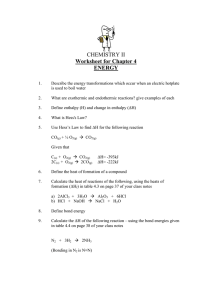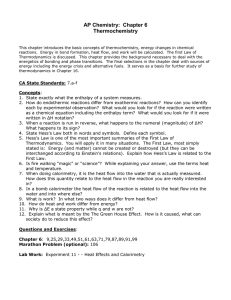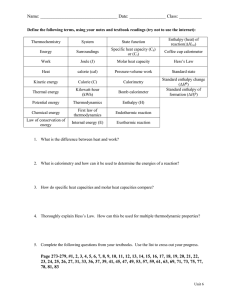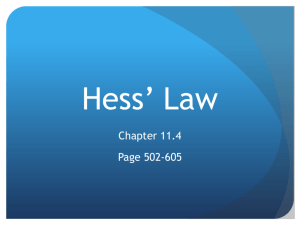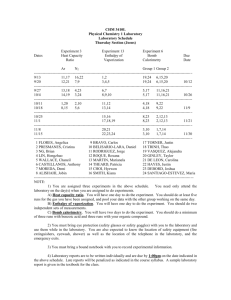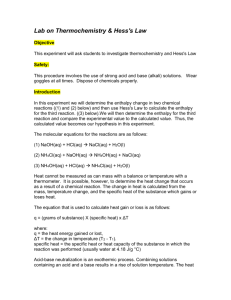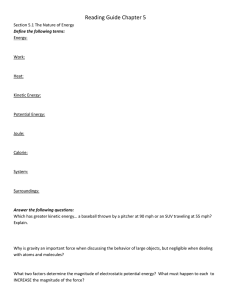Generally,a subscript on a H value indicates a molar enthalpy value
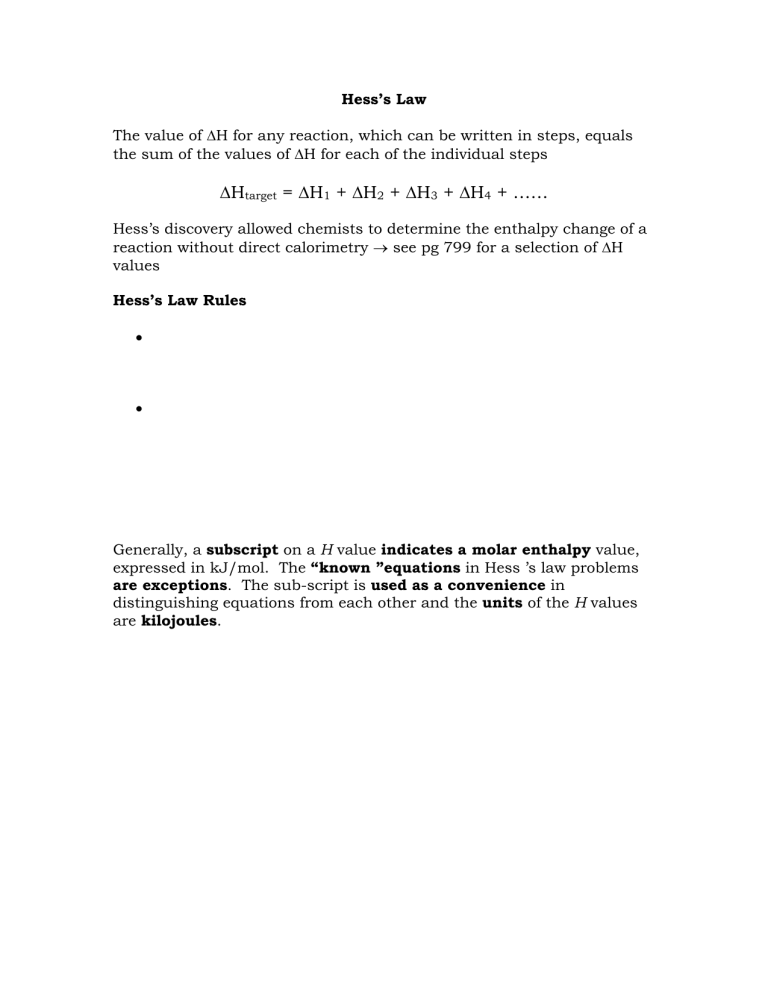
Hess’s Law
The value of H for any reaction, which can be written in steps, equals the sum of the values of H for each of the individual steps
H = H + H + H + H target 1 2 3 4
+ ……
Hess’s discovery allowed chemists to determine the enthalpy change of a reaction without direct calorimetry see pg 799 for a selection of H values
Hess’s Law Rules
Generally, a subscript on a H value indicates a molar enthalpy value, expressed in kJ/mol. The “known ”equations in Hess ’s law problems
are exceptions. The sub-script is used as a convenience in distinguishing equations from each other and the units of the H values are kilojoules.
Examples
1.
What is the enthalpy change for the formation of two moles of nitrogen monoxide from its elements?
N
2(g)
+ O
2(g).
2NO
(g)
H ° = ?
Given:
(1) ½ N
2(g)
+ O
2(g)
NO
2(g)
H °
1
= 34 kJ
(2) NO
(g)
+ ½ O
2(g)
NO
2(g)
H°
2
= –56 kJ
2.
What is the enthalpy change for the formation of one mole of butane (C
4
H
10
) gas from its elements? The reaction is:
4C
(s)
+ 5H
2(g)
C
4
H
10(g)
H ° = ?
The following known equations,determined by calorimetry,are provided:
(1) C
4
H
10(g)
+ 13/2 O
(2) C
(s)
+ O
2(g)
CO
2(g)
4 CO
2(g)
H °
2
2(g)
+ 5 H
2
O
(g)
H °
1
= - 2657.4 kJ
(3) 2 H
2(g)
+ O
2(g)
2H
2
= - 393.5 kJ
O
(g)
H °
3
= - 483.6 kJ
